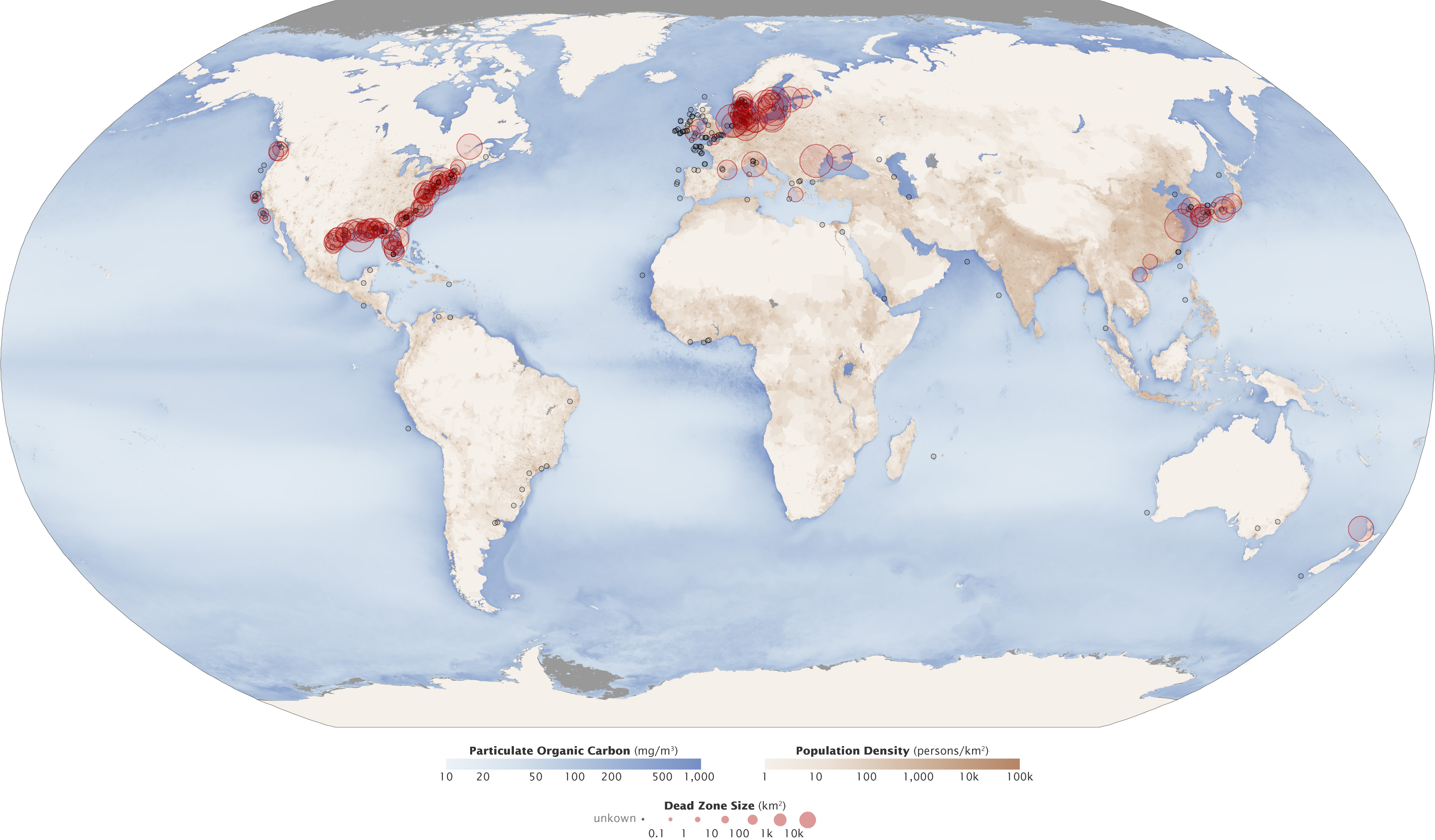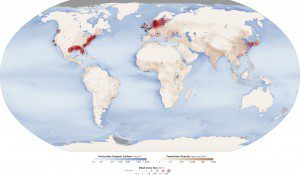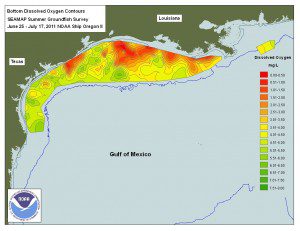
02 Jun EARTH MATTERS: DEAD ZONES IN OUR WATERS
 Every state is an ocean state.
Every state is an ocean state.
I have said it before – in this very column, Earth Matters – and it is a common refrain among those who work on ocean issues. This is not just because we are looking for ways to interest people, who tend to be land-dwellers, in ocean matters, it is also because it happens to be the case.
Over 70% of the planet is covered with water. The ocean provides much of the air we breathe and the food we eat. Many sectors of our economy depend on the coasts and ocean, from fishing to cargo shipping to tourism. Around 40% of the world’s population lives within 60 miles of a coastline, and millions of people visit the ocean for relaxation, rejuvenation, and recreation every year. Arthur C. Clarke’s quote sums up best: “How inappropriate to call this planet Earth when it is quite clearly Ocean.”
But these ecosystem services – resources and process provided by natural systems – are not the only connection between land and ocean. In fact, the relationship tends to be rather one-sided. People receive many beneficial ecosystem services from the ocean, and the ocean in turn gets marine debris, pollution, and other negative impacts. Trash from land-based sources, even far inland, ends up in the ocean. Carbon emissions contribute to ocean acidification. Urban and agricultural runoff ends up in coastal and ocean waters. This last problem contributes to what is known as “dead zones.”
Dead zones, or hypoxic zones, are areas of low oxygen that cause serious harm to marine organisms. Normal ecosystem functions are disrupted. Fish swimming in a dead zone can die from suffocation or suffer reproductive problems if they are unable to escape the area quickly. Shellfish and bottom dwellers with limited mobility may simply die if the dead zone persists.
Dead zones occur globally, and have been increasingly common in recent years. Some are naturally-occurring in areas of coastal upwelling – for example in the Bay of Bengal, where marine life is adapted to recurring low oxygen conditions – although these, too, can be exacerbated by land-based pollutants. One of the best-known of these zones in the U.S. occurs annually in the Gulf of Mexico off the coasts of Louisiana and Texas. Here, ties to land-based impacts are very clear. Much of this dead zone is traceable to a combination of structural changes to natural systems – channelization of rivers, destruction of wetlands, dredging – and increased nutrient levels from agricultural and urban runoff, particularly into the Mississippi River, which drains into the Gulf of Mexico.
Agricultural runoff is a major issue because fertilizer that has been applied to crops but not taken up by the plants can be washed into streams and rivers, particularly after heavy rains. Urban runoff, including nitrates and phosphorous from wastewater treatment facilities, septic tanks, dog poop, and fertilized lawns is also a major contributor. This runoff, laden with fertilizers, contributes to fast growth of planktonic algae in coastal areas. The algae, in turn, spurs growth in microbes that decompose the algae when it dies and sinks to the sea floor. All of this rapid growth takes oxygen, which means that the amount of oxygen remaining for other marine life decreases.
That is a major issue for the Gulf of Mexico, which has had to respond to more than its fair share of assaults over recent years: runoff, loss of wetlands, hurricanes, overfishing, chronic oil releases, and of course the BP oil disaster two years ago. The growing dead zone that occurs every summer in the Gulf of Mexico continues to reduce habitat for marine organisms like brown shrimp and to kill less mobile organisms like oysters. Several of the species at risk are important fishery species on which whole communities rely for their economic sustainability. So what is to be done?
Ocean Conservancy’s report, “Restoring the Gulf of Mexico: A framework for ecosystem restoration in the Gulf of Mexico” (available at http://www.oceanconservancy.org/our-work/assets/pdf/oc-gulfrestoration-dec15.pdf), provides excellent information about the current status of the Gulf , what problems it is facing, and what some solutions might be. It recommends improved long-term monitoring, research, and management as a prerequisite to long-term health, and also suggests some direct interventions, “such as reducing land-based pollutants (e.g., nutrients) and marine pollutants (e.g., small, human-caused chronic releases of oil), and improving the management of fishery resources and offshore habitats.”
These direct interventions, notably, are not tied only to coasts and the ocean. Additionally, some of them could help in areas beyond the Gulf of Mexico, like the Puget Sound in Washington, that also are suffering from more frequent, larger-scale dead zones. Policy options available range from education to legislation to habitat restoration.
Monitoring and enforcing regulations on septic systems and wastewater treatment facilities can prevent untreated, high-nutrient water from entering waterways. Pooper-scooper laws can keep fecal matter, high in nitrates and phosphates that promote algal growth, out of the water. Regulation of concentrated animal feeding operations (CAFOs) can prevent mass quantities of animal waste from getting into the water, particularly after storms where large amounts can be washed away. And eliminating CAFOs would be an even better solution, with additional benefits to human and animal health and well-being.
On-farm practices that reduce nutrient runoff, like better-timed fertilizer application, no-till farming, contour cropping, and lower fertilizer application rates can help limit the nutrients that enter streams and rivers; some can also help farmers save costs. Dissemination of information about these techniques by extension agents could help promote their adoption.
Restoration of coastal habitats like wetlands, mangroves, or barrier islands can also reduce the problem, while at the same time helping mitigate and adapt to climate change and sea level rise. Restoration of inland riparian zones can do the same, reducing the risks of flooding while providing filtration. Indeed, steps taken inland can help mitigate the problem far before it reaches the coast and steps taken at the local level can make a difference to the ocean that all of us rely on.



Pingback:EARTH MATTERS: LIGHTS OUT | Telluride Inside… and Out
Posted at 20:43h, 07 February[…] pollution can also cause problems in the ocean, like the dead zones I discussed in an earlier post (https://www.tellurideinside.com/2012/06/earth-matters-dead-zones-in-our-waters.html). In addition, I have written about the problem of marine debris and steps we can take to address […]